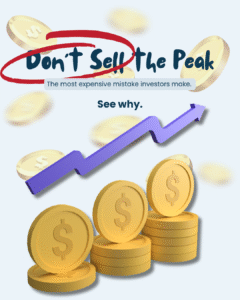The market is hitting new highs, and that voice in your head is getting louder, isn’t it? “This is it. This is my chance. I need to sell now and lock in these profits before they vanish.”
It feels like the smartest, safest decision you could make. It feels like taking control. But what if I told you that acting on this feeling—what we call “Summit Fever”—is often the single most expensive financial mistake an investor can make?
Before you move your portfolio to the sidelines, let’s ignore the noise and look at the hard data. The truth about market peaks is not just surprising; it’s the key to building real, long-term wealth.
The All-Time High Myth: What if You Only Bought at the Top?
Let us imagine you have the worst market timing in history. Your strategy is to invest your money only on the exact day the market hits a new all-time high. You would expect to be punished for it, right?
The data shows the opposite is true.
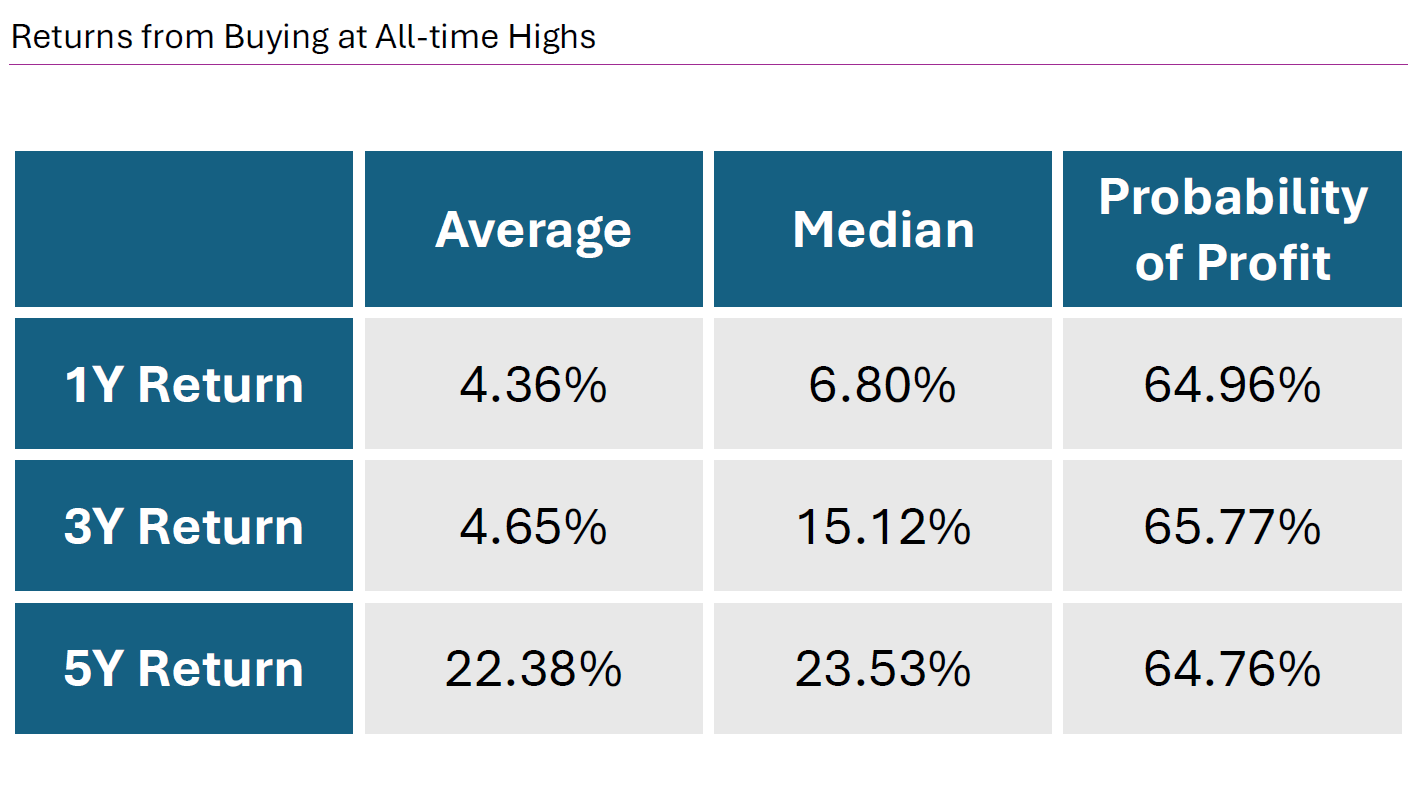
Source: MSCI ACWI Index
Think about that for a second. Even with the “worst” possible timing, you would have made an average of 22.38% over five years. A market high isn’t a warning sign; it’s a sign of strength and momentum. It’s what healthy markets are supposed to do.
The lesson: The market’s job is to reach new heights. Your job is simply to be invested when it does.
The Unbalanced Scale: Why Good Years Are Stronger Than Bad Years
“But what about the crashes?” It’s a fair question. We’ve all seen them, and they’re painful. But our fear gives them too much credit.
Imagine a scale. On one side, you place all the negative years the market has had since 1999. On the other, you place all the positive years. The scale wouldn’t just tip; it would crash down on one side.
Nearly 70% of the last 26 years have been profitable for investors. More importantly, the good years are far more powerful than the bad ones. The most common outcome is not a small gain or a devastating loss—it is a strong, double-digit gain that builds serious wealth. Cashing out means you risk missing the very years that are most crucial for your portfolio’s growth.
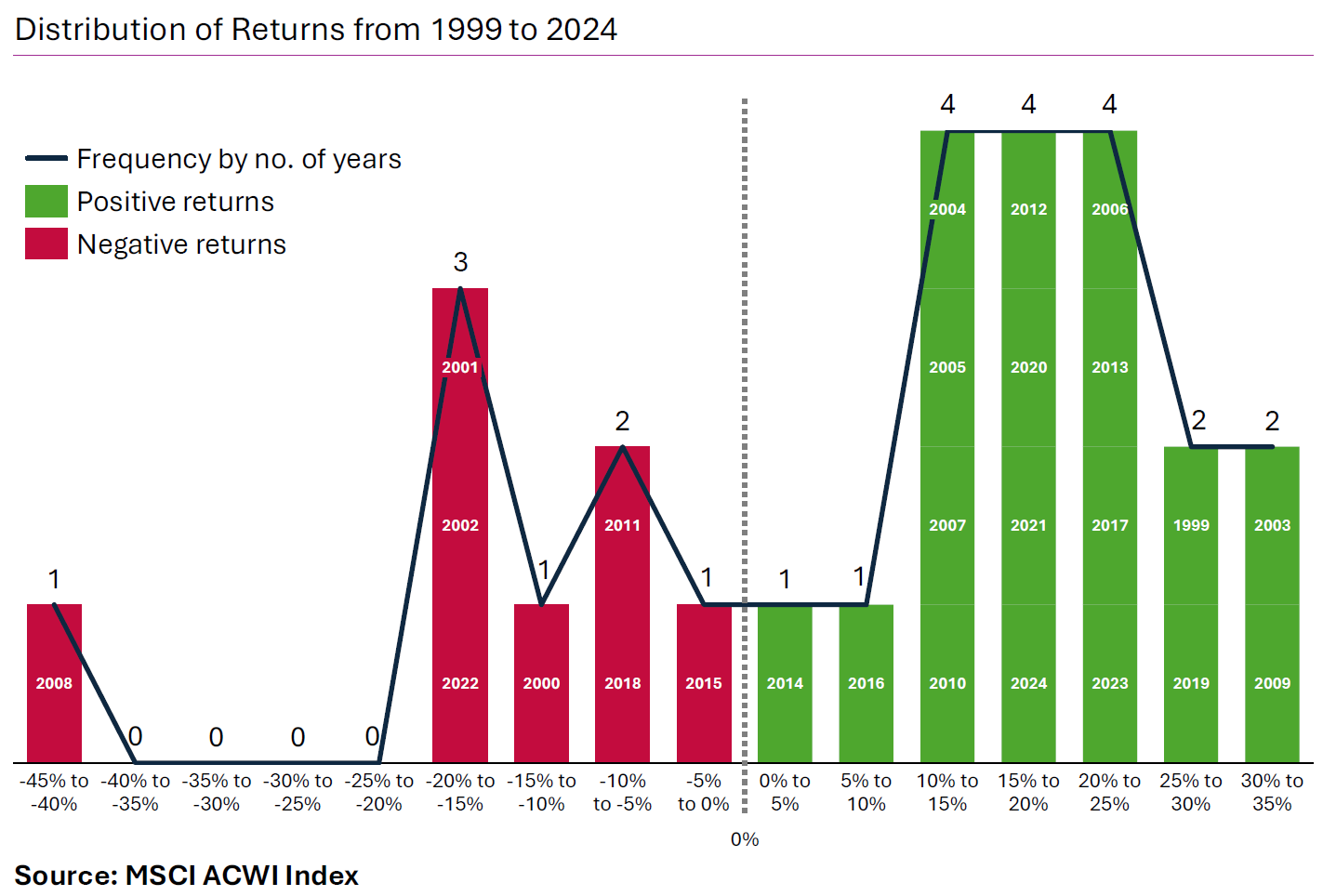
The Power of a Decade: Your Ultimate Defense Against Fear
If yearly swings still feel too volatile, let us zoom out to the ultimate perspective: the 10-year journey. This is where the market’s noise fades and the true trend of growth becomes undeniable.
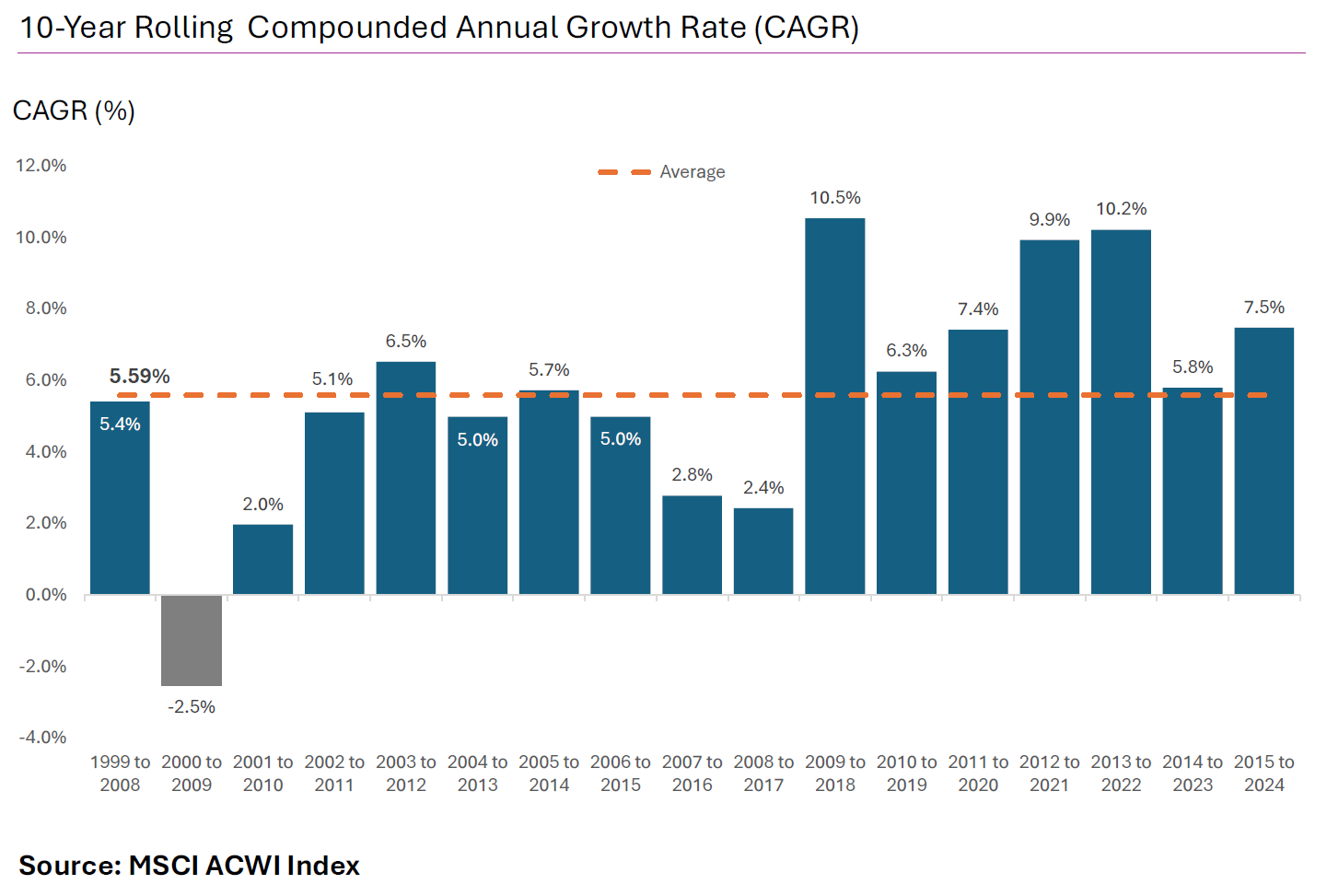
Out of all possible 10-year windows since 1999, only one had a negative return—and it was the one that caught two historic crises. Every other decade delivered positive returns, with an average 10-year compounded annual growth rate (CAGR) of 5.59%. Time is the single greatest tool an investor has to smooth out volatility and let the engine of compounding work its magic.
The Real Trap: Cashing Out is a Two-Part Mistake
Here is the most critical point: selling to lock in gains is not one decision; it is two. You have to be right about when to get out, and you have to be right about when to get back in.
Getting back in is the part everyone forgets. While you wait in cash for the “perfect” moment, the market continues its climb.
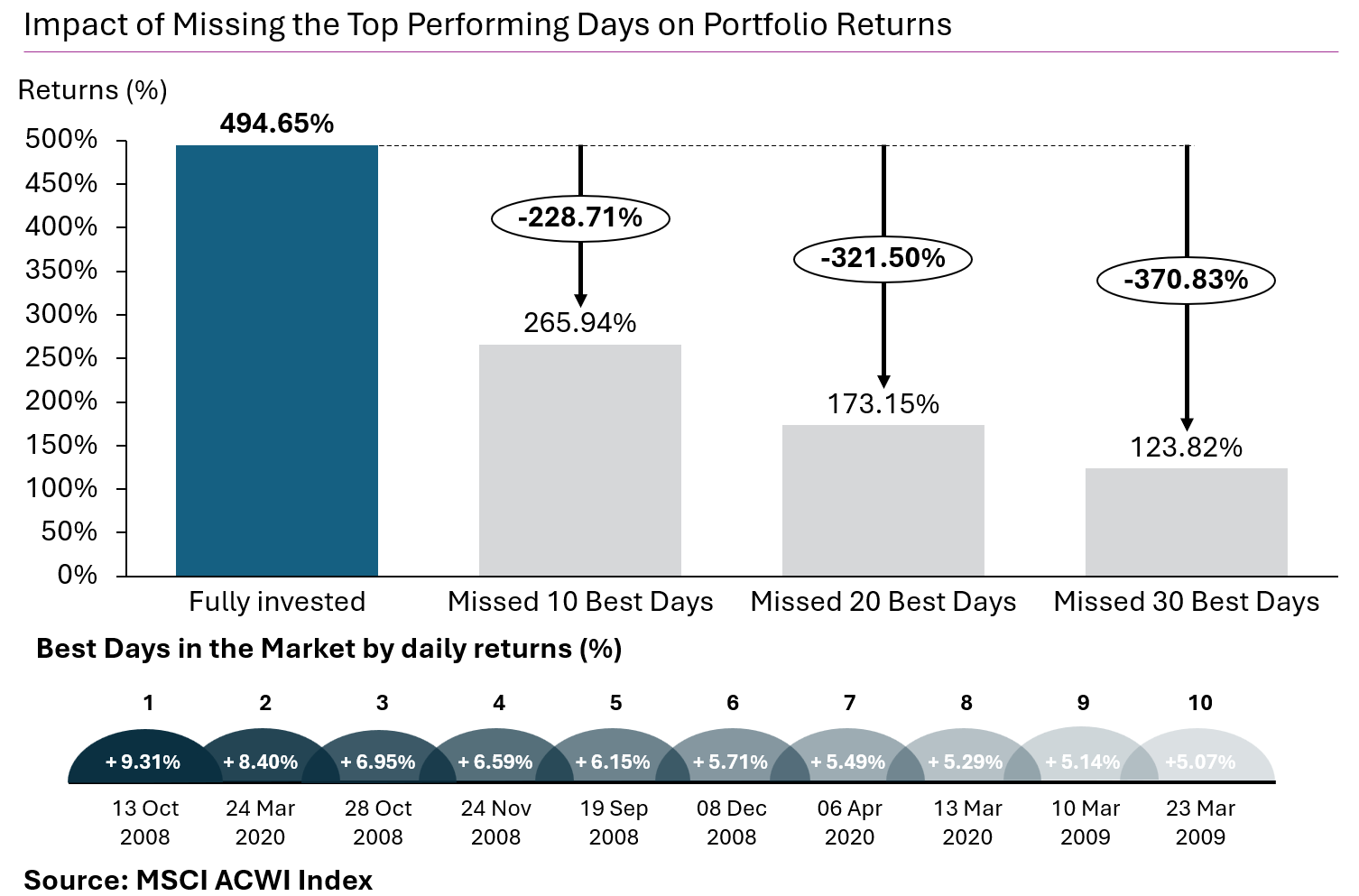
Studies have shown that missing just the 10 best days in the market over a 26-year period can cut your total returns by almost half. Those best days often come suddenly and without warning, usually right after a period of fear.
The real risk is not staying invested at a peak. The real risk is being on the sidelines when the market continues its relentless, long-term climb.
Your Journey Is Far From Over
Your portfolio is not a lottery ticket to be cashed. It is the engine for your financial future. Making an emotional decision based on “Summit Fever” feels safe, but history shows it is a trap.
The data is clear: the market rewards discipline and a long-term perspective. What feels like a peak today is very often the base camp for tomorrow’s ascent.
Before making a move, speak with us. Let’s ensure your strategy is built for the entire journey, not just for navigating a single peak.
Stay the course. Your future self will thank you.
Share these truths with someone who needs to hear them:
- Truth #1: Buying at a peak is not a mistake. History shows the market keeps climbing.
- Truth #2: Good years are more frequent and powerful than bad years. Do not let fear make you miss them.
- Truth #3: The biggest risk isn’t the next downturn, but missing the next upturn. Selling is a two-part mistake that’s hard to recover from.



